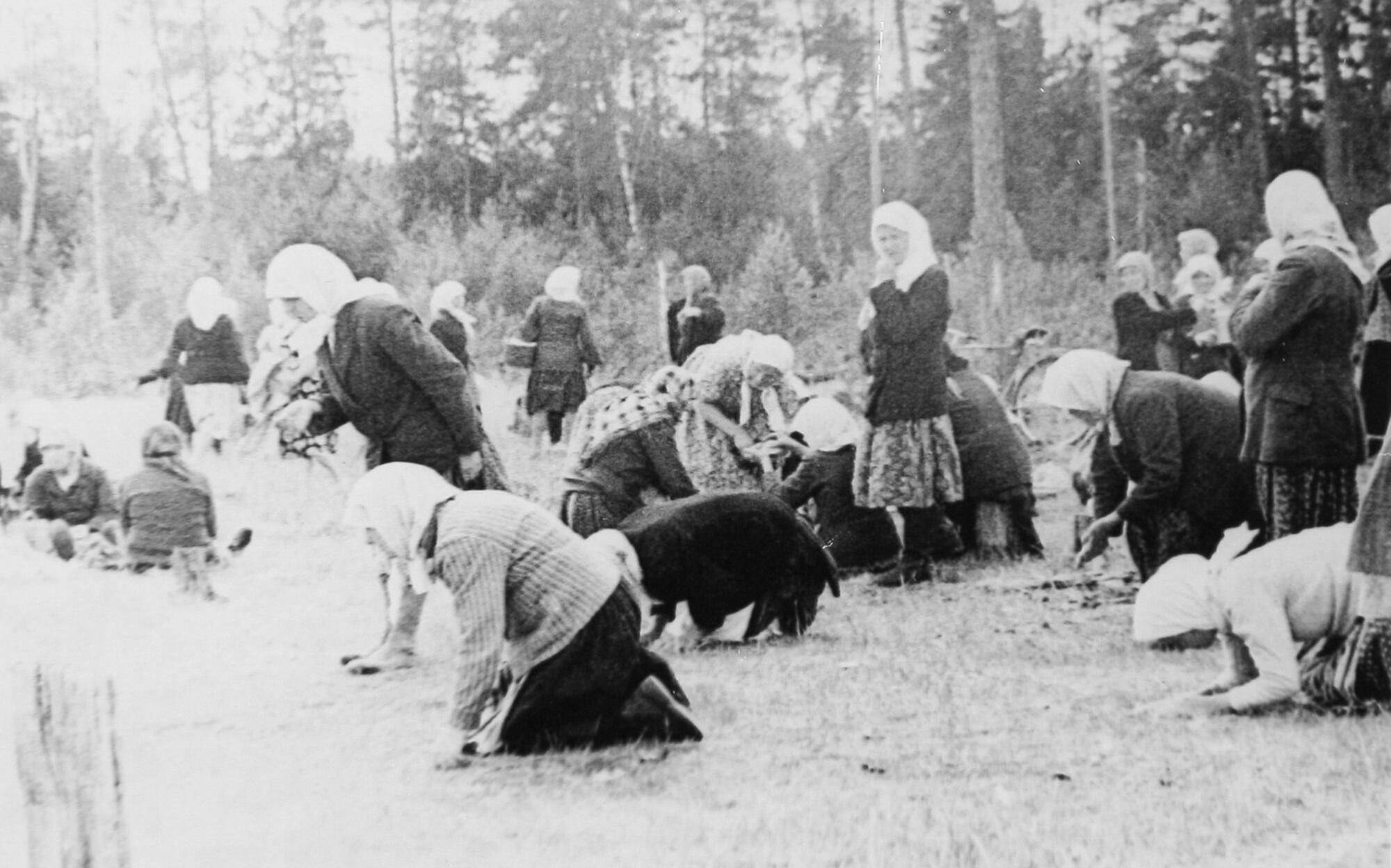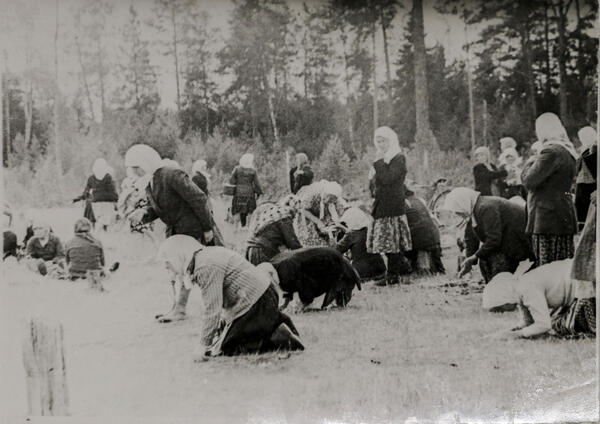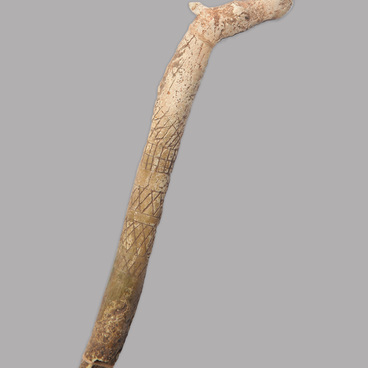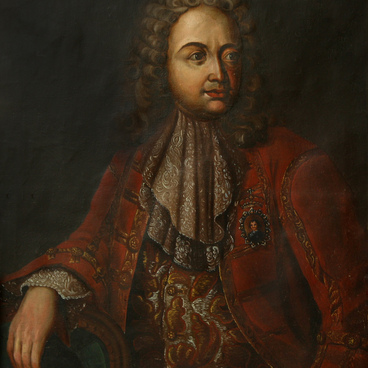The photo depicts the rite of commemoration of the “old” performed by Komi-Permyaks. At the edge of the forest, are women of different ages in white shawls, colorful scarves and jackets. Some of them kneel reciting prayers, while others sit eating and drinking, and remembering the “old” — ancient dead ancestors, whom they never knew.
The “cult of the old” (“vazh otir” in the Komi language) is ancestor worship. The word “vazh” is translated as “old”, but it also means “ancient” and “former”. It refers to the ancient population of the Upper Kama region, which disappeared with the arrival of the “new” (“vil”), “our” (“miyan”) people. The “old” people are also called “other”, “earlier” and — more often — “Chude”.
Chude is a general term in Old Russian, which is used to refer to several tribes of the Baltic-Finnish group: Korela, Izhora, Vod’, Sum’, Ves’, and Esti. The name suggests that these tribes seemed strange (chudny), alien (chuzhdy) to people, mainly because of their language and customs. The first mention of the Chudes appeared in the “Tale of Bygone Years” in 859.
Once a year, during the Mermaid (Midsummer) or Pentecost Week, which occurs in June, on Saturday morning after the Semik (All-Memorial Thursday), the Komi-Permyak people go to “vazh mestaez” — a special “ancient” place. After praying in accordance with the Christian ritual, they treat each other to some tasty food, remember their great ancestors they heard about in legends, bring them their offerings: kerchiefs, belts, money. People invite the spirits to share a meal with them, beg them to get neither offended nor angry, even if the descendants have done something wrong to them. The main plea to the ancestors is to bless people and cattle with good health, crops, peace and happiness.
The Komi-Permyaks believed that the “old” people possessed supernatural power, they could inflict mizha (curse, penance) on the living if they neglected or insulted their memory, for example by digging up old burials. Diseases, fires or sudden deaths of livestock were most often blamed on the “old ones”. “Vazhzhez myzhyisȍ — the old punished”, this was how the Komi-Permyaks would explain the misfortune and would head to a witch doctor to find out the punisher’s name and beg for forgiveness. The “cult of the old” is a variation of the cult of ancestors, an attempt to unravel the mystery of the afterlife, demonstration of the belief in immortality, which in varying degrees has survived to this day in many religions.
The “cult of the old” (“vazh otir” in the Komi language) is ancestor worship. The word “vazh” is translated as “old”, but it also means “ancient” and “former”. It refers to the ancient population of the Upper Kama region, which disappeared with the arrival of the “new” (“vil”), “our” (“miyan”) people. The “old” people are also called “other”, “earlier” and — more often — “Chude”.
Chude is a general term in Old Russian, which is used to refer to several tribes of the Baltic-Finnish group: Korela, Izhora, Vod’, Sum’, Ves’, and Esti. The name suggests that these tribes seemed strange (chudny), alien (chuzhdy) to people, mainly because of their language and customs. The first mention of the Chudes appeared in the “Tale of Bygone Years” in 859.
Once a year, during the Mermaid (Midsummer) or Pentecost Week, which occurs in June, on Saturday morning after the Semik (All-Memorial Thursday), the Komi-Permyak people go to “vazh mestaez” — a special “ancient” place. After praying in accordance with the Christian ritual, they treat each other to some tasty food, remember their great ancestors they heard about in legends, bring them their offerings: kerchiefs, belts, money. People invite the spirits to share a meal with them, beg them to get neither offended nor angry, even if the descendants have done something wrong to them. The main plea to the ancestors is to bless people and cattle with good health, crops, peace and happiness.
The Komi-Permyaks believed that the “old” people possessed supernatural power, they could inflict mizha (curse, penance) on the living if they neglected or insulted their memory, for example by digging up old burials. Diseases, fires or sudden deaths of livestock were most often blamed on the “old ones”. “Vazhzhez myzhyisȍ — the old punished”, this was how the Komi-Permyaks would explain the misfortune and would head to a witch doctor to find out the punisher’s name and beg for forgiveness. The “cult of the old” is a variation of the cult of ancestors, an attempt to unravel the mystery of the afterlife, demonstration of the belief in immortality, which in varying degrees has survived to this day in many religions.



